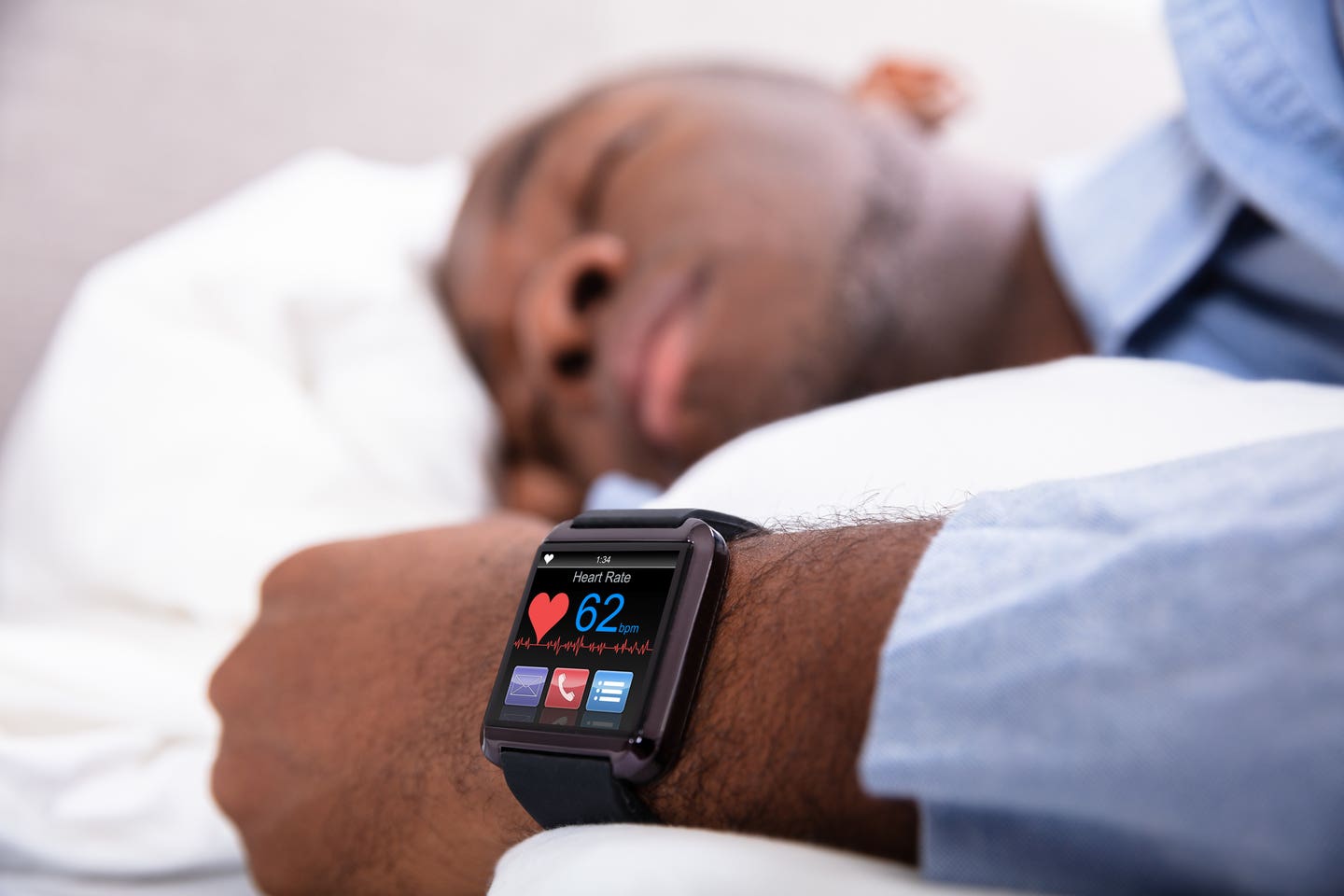Heart rate during sleep linked to early stroke, depression, and dementia risks
Heart rate variability during sleep may signal risks for stroke, depression, and more—before symptoms begin.

Subtle changes in heartbeat timing during sleep may predict future health conditions like stroke and depression years in advance. (CREDIT: (CREDIT: CC BY-SA 4.0)
The rhythm of a healthy heart may seem steady, but underneath that regular thump lies a rich, ever-changing pattern. These beat-to-beat changes, known as heart rate variability, or HRV, reveal much more than just how fast the heart beats. They show how the brain and body work together to stay balanced, respond to stress, and even hint at future health problems.
What Heart Rate Variability Really Means
HRV refers to the tiny differences in time between one heartbeat and the next. While heart rate counts the number of beats per minute, HRV tracks the millisecond shifts in the spacing of those beats. These fluctuations are not random—they’re shaped by complex networks that help the body adapt to both internal and external changes.
This system is controlled in part by the autonomic nervous system (ANS), which manages functions you don’t have to think about, such as breathing, digestion, and blood pressure. HRV reflects how the ANS responds to challenges and restores balance. A flexible, responsive HRV pattern suggests the body can adapt well. But a rigid or erratic pattern may mean there’s trouble ahead.
Healthy biological systems are full of variability. The heart doesn’t beat like a metronome; it responds to everything from a passing thought to a stressful encounter. These heart oscillations are non-linear and chaotic—though not in the everyday sense of disorder. In science, chaos refers to complex and unpredictable patterns governed by precise rules. This form of organized unpredictability helps the body stay prepared for anything.
When HRV Becomes a Warning Sign
Recent research from the Department of Neurology at Inselspital, the University Hospital of Bern, has shown just how powerful HRV can be as an early health indicator. In a long-term study following 4,170 individuals over more than 13,000 person-years, researchers uncovered strong links between HRV patterns during sleep and future illnesses.
The study found that participants who later had strokes often had very high and erratic HRV during sleep. In contrast, those who developed depression tended to show lower HRV. Some people with future metabolic conditions, like diabetes or obesity, also had high HRV—but with frequency patterns that were off from the norm. The same went for cardiovascular and endocrine disorders.
Related Stories
Dr. Irina Filchenko, the study’s lead author, explained, “HRV matters for brain and overall health because it reflects how well the body regulates itself – primarily through the activity of the autonomic nervous system.” That regulation is central not only to staying calm under pressure but to maintaining life-supporting processes throughout the body.
At night, HRV usually drops as the body shifts into a repair mode. During deep sleep, this lower HRV shows the nervous system is resting and preparing for a new day. But when patterns during sleep don’t follow this expected rhythm, it can hint at something going wrong before symptoms show up.
“While many people are familiar with tracking sleep stages or total sleep time, nocturnal HRV provides a unique window into how the body functions during sleep,” said Dr. Filchenko. “This is especially important because sleep is a critical time for many physiological processes underlying long-term health.”
Measuring HRV: Science Beyond the Numbers
To fully understand HRV, researchers use several different tools. Some look at the time between beats over minutes or even a full day—called time-domain analysis. Others break down the signal into frequency components to see how energy shifts between different rhythms. Non-linear methods dive deeper into the complexity of the system, measuring unpredictability across short stretches of time.
Each approach tells a slightly different story. Time-domain measures might be better for long monitoring sessions, while frequency and non-linear methods may catch subtle patterns during shorter recordings. Importantly, researchers caution that one type of HRV data doesn’t replace another. A short two-minute snapshot shouldn’t be compared directly to a full day’s worth of data.
Many things influence baseline HRV. Age and sex play a role, and so does the time of day. Activity, stress, and sleep patterns all shape the data. Because of this, scientists advise professionals to compare results only to similar populations and contexts. Published norms can help, but they should be paired with data from the specific group being studied.
It’s also vital to remember that higher HRV doesn’t always mean better health. Some serious heart conditions, like atrial fibrillation, can also raise HRV. In these cases, close analysis of ECG readings can help determine whether the numbers reflect resilience or risk.
Why It Matters for Brain Health and Beyond
The brain and heart share a close connection. In fact, the heart has its own “little brain”—the intrinsic cardiac nervous system—which sends messages back to the brain’s prefrontal cortex. This flow of information helps guide focus, emotional control, and decision-making.
High resting vagally-mediated HRV, a form influenced by the parasympathetic nervous system, is tied to better performance on mental tasks. It’s also linked to emotional flexibility and quicker recovery from stress.
But HRV isn’t only about stress response. It also reflects the tone of blood vessels, how well the lungs exchange gases, and even the activity of facial muscles. These connections hint at a much larger picture of health—one where the rhythm of the heart mirrors the state of the body and mind.
The University Hospital of Bern study deepens this view. By focusing on HRV during sleep, researchers showed that subtle shifts in heartbeat rhythms can provide early signs of chronic illnesses. Many of the participants who later developed serious conditions had perfectly normal-looking sleep on the surface. But their HRV data told another story.
“Some participants had ‘normal’ sleep according to traditional criteria,” said Dr. Filchenko. “However, HRV told a different story, picking up risks that the common sleep metrics missed. This suggests we need to rethink how we define and measure optimal sleep.”
What the Future Holds
Wearable technology is already being used to track HRV in everyday life. Devices like smartwatches and fitness trackers record sleep and heart data nightly. Although not all current consumer devices are accurate enough for diagnosis, their potential is growing fast.
If these tools improve, they could help people spot subtle signs of illness before symptoms develop. For conditions like stroke or Alzheimer’s, early action could mean the difference between decline and recovery.
Dr. Filchenko believes the findings offer a broader message about health. “Sleep is not just a passive state of rest — it is an active, dynamic process that plays a vital role in maintaining long-term health, especially brain health,” she explained. “Our findings reinforce the idea that primary prevention matters, and that health problems start long before the clinical symptoms appear.”
By paying closer attention to patterns in HRV, science is uncovering new ways to protect health before it's too late. While the heart may not speak in words, its rhythm may be the body’s earliest cry for help—and perhaps its strongest call to stay well.
Note: The article above provided above by The Brighter Side of News.
Like these kind of feel good stories? Get The Brighter Side of News' newsletter.



